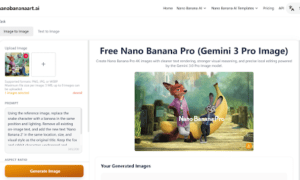In the world of finance, few events rattle investors more than the unexpected collapse of a once-trusted company. The downfall of GWG Holdings Inc., an enterprise that promised prosperity through unique investment products known as L Bonds, has left many scratching their heads and checking their wallets.
What could cause such a seemingly successful business to falter? And more urgently, where did the money go?.
One stark fact is clear: GWG Holdings missed crucial payments totalling $3.25 million—a move that often signals deep financial woes. If you’re among those impacted by these unsettling developments or simply curious about the repercussions of such financial nosedives on your own investments, this article aims to demystify what went wrong with GWG Holdings.
We’ll venture into understanding how a labyrinth of high-risk decisions led to significant losses and explore steps for protection against similar fates in the future. Ready to unravel this mystery? Keep reading for insights that can safeguard your financial peace of mind.
Key Takeaways
- GWG Holdings missed $3.25 million in payments and faced over $2 billion in liabilities.
- Their high – risk L Bonds had no credit rating or insurance, leading to huge losses for investors.
- The stock price dropped 49% within four months as the SEC investigated possible Ponzi scheme activities.
- GWG Holdings filed for bankruptcy, while investors seek ways to get back their money.
- It’s important for people to understand investment risks and check a company’s financial health before investing.
GWG Holdings and the L Bonds
GWG Holdings offered high-risk investments in the form of L Bonds, which lacked credit ratings and insurance. Many investors were attracted to these risky investments due to the promise of high returns, but ultimately faced significant losses when GWG Holdings collapsed.
High risk investments
GWG Holdings sold L Bonds as high risk investments. These bonds offered big returns but came with no credit rating or insurance to protect buyers. Investors were warned about the risks, yet many still bought into the promise of high profits.
Without a credit rating, it was hard for anyone to know if GWG Holdings could pay back their debts.
Investors didn’t have safety nets with these L Bonds. When GWG missed $3.25 million in payments, people grew worried. Their fear was right; the stock price fell sharply by 49% in just four months.
Creditors later called out GWG’s operations as a “classic Ponzi scheme.” They claimed the company wasn’t making enough money and was paying old debts with new investors’ cash.
Lack of credit rating
GWG Holdings’ L Bonds were high-risk investments with no credit rating or insurance, posing significant risks to investors. This lack of protection increased the vulnerability of the investment, leaving investors exposed to potential losses if the company faced financial challenges.
GWG Holding’s failure to obtain a credit rating and insurance left investors without vital safeguards that could have mitigated some of the risks associated with their investments.
The absence of a credit rating and insurance for GWG Holdings’ L Bonds significantly heightened investor exposure to risk, amplifying the impact of the company’s subsequent financial collapse and leading to devastating losses for many stakeholders.
Collapse of GWG Holdings and Loss of Investor’s Money.
GWG Holdings collapsed, leading to a significant loss of investor money. The company missed $3.25 million in payments on their L Bond issues and faced over $2 billion in liabilities, with creditors alleging a Ponzi scheme.
The stock price plummeted by 49% within months, and the SEC’s investigation intensified its downfall. Consequently, GWG Holdings filed for bankruptcy in Texas amid ongoing lawsuits and restructuring efforts while L Bond holders seek recovery options.
Investors lost millions as GWG Holdings’ financial crisis unfolded due to missed bond payments, steep stock decline, massive liabilities, alleged Ponzi scheme accusations, SEC investigations, bankruptcy filing alongside lawsuits and restructurings.
Conclusion
In conclusion, the collapse of GWG Holdings has led to significant losses for investors. Creditors have accused the company of running a classic Ponzi scheme and failing to generate sufficient income.
With ongoing lawsuits and restructuring efforts, L Bond holders are exploring recovery options. It is crucial for investors to understand the risks associated with high-yield investments like L Bonds and be cautious in their investment decisions.
Seeking professional advice and staying informed about companies’ financial standings can help protect against similar situations in the future. The impact of GWG Holdings’ collapse serves as a cautionary tale for all investors, emphasizing the importance of due diligence before investing in high-risk ventures.
FAQs
1. What is the GWG Holdings collapse?
The GWG Holdings collapse was a financial crisis where the company faced bankruptcy due to issues like asset mismanagement and investment scandals.
2. Why did GWG Holdings go bankrupt?
GWG Holdings went bankrupt because of major problems managing money, bad investments, and possibly committing financial fraud.
3. Are there still assets left after the GWG Holdings liquidation?
After liquidation, a wind down trust will handle what’s left of GWG Holdings’ assets, including life insurance policies.
4. What does the wind down trust do for investors?
A wind down trust takes care of selling off assets and trying to get some money back for people who invested in GWG Holdings.
5. Where can I find more information about the collapse of GWG Holdings?
For updates on what happened with the money, look at press releases about GWG Holdings’ bankruptcy and check corporate news focused on investor protection.



































